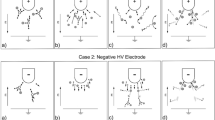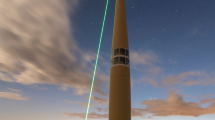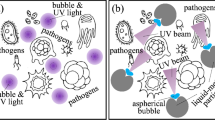Abstract
WHEN a high explosive detonates, the measurement of the true emission of light from the detonation gases is of great interest. In air, however, the expanding detonation gas is enveloped in a compressed layer of the displaced air, which acquires a high temperature (c. 8,000° K. at atmospheric pressure) and emits an intense light. An easy way of eliminating the luminous layer of air is to immerse the charge in water. Charges of TNT and phlegmatized PETN, for example, then show a narrow luminous zone behind the detonation front. Fig. 1 shows instantaneous pictures (exposure time, 0.03 µsec.) of detonating cylinders of phlegmatized PETN of 1.55 gm./cm.3 density and 25-mm. diameter, first with (1a) then without (1b) background light of a detonated TNT-ball, (In Fig. 1b and Fig. 2 the upper end of the charge was above the surface.)
This is a preview of subscription content, access via your institution
Access options
Subscribe to this journal
Receive 51 print issues and online access
$199.00 per year
only $3.90 per issue
Buy this article
- Purchase on Springer Link
- Instant access to full article PDF
Prices may be subject to local taxes which are calculated during checkout
Similar content being viewed by others
References
Johansson, C. H., and Sternhoff, L., Nature, 183, 247 (1959).
Author information
Authors and Affiliations
Rights and permissions
About this article
Cite this article
JOHANSSON, C., SJÖLIN, T. Emission and Absorption of Light behind the Detonation Front. Nature 185, 523–524 (1960). https://doi.org/10.1038/185523b0
Issue Date:
DOI: https://doi.org/10.1038/185523b0
This article is cited by
-
Liquid Explosives with Transparent Detonation Products
Nature (1963)
Comments
By submitting a comment you agree to abide by our Terms and Community Guidelines. If you find something abusive or that does not comply with our terms or guidelines please flag it as inappropriate.



